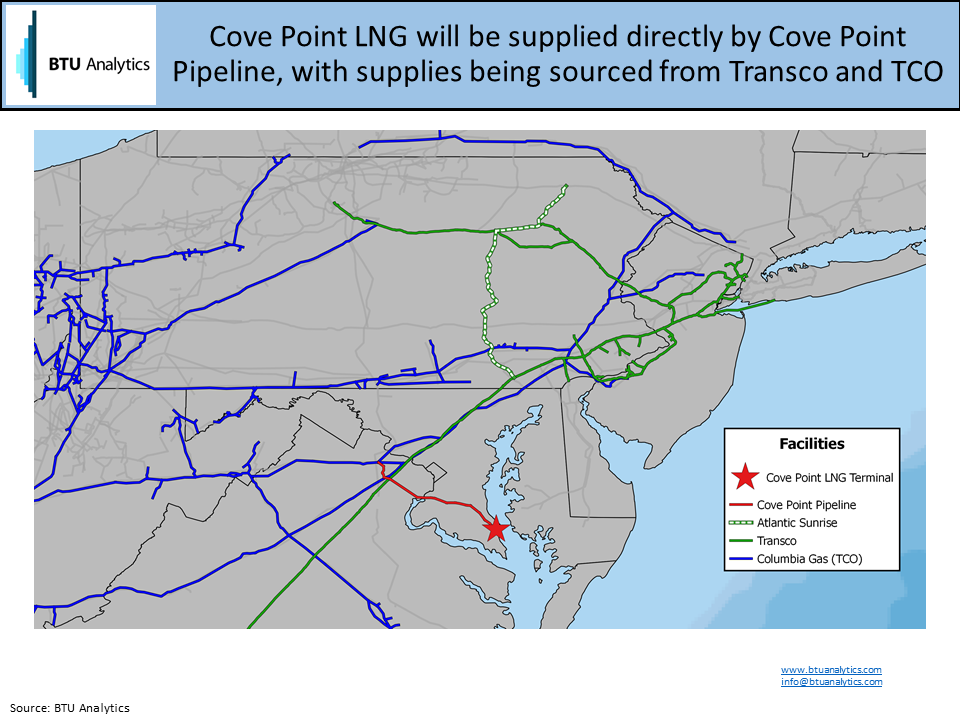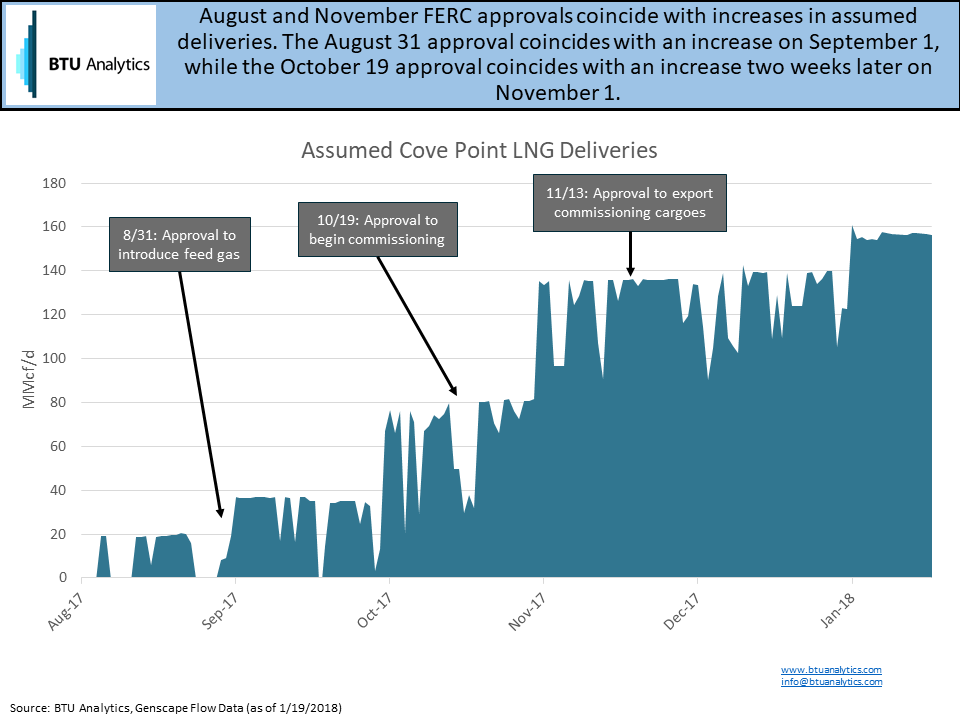While the Eastern Seaboard of the United States has been cooling off the past few weeks, the US LNG export market continues to heat up, thanks to the anticipated in-service of Dominion Energy’s Cove Point LNG export terminal. Cove Point, in line to be the US mainland’s second LNG export terminal, is recently rumored to be delayed until March or April, although Dominion has yet to confirm these rumors. However, while the delay will put off the commercial start of the facility, flow data suggests that the facility has already been receiving piped-in volumes since September, emerging as a new source of gas demand on the East Coast.
The first major US LNG export facility to be completed, Sabine Pass, began exporting in 2016 and announced substantial completion of their fourth train in October 2017. As of today, with four trains running, Sabine Pass represents approximately 2.8 Bcf/d of LNG exports, and approximately 3.2 Bcf/d of Gulf Coast demand (due to the need for a portion of delivered gas to be used as fuel for the facility), a volume similar in magnitude to New York City LDC deliveries during the most recent cold snap.
When Cove Point starts up later this year, it will take US total export capacity to about 3.5 Bcf/d. Of note, however, is that Cove Point will help spread that export capacity, and associated demand, across the United States, since it is one of two LNG facilities under construction that is outside of the Gulf Coast (the other being Elba Island LNG in Georgia). Supplies for Cove Point will be sourced from Transco (including its upcoming Atlantic Sunrise project) and Columbia Gas Pipeline (TCO), as shown in the map below.

BTU Analytics has been tracking flows on pipelines surrounding the facility, including the Cove Point Pipeline, which serves the LNG terminal. While direct nominations to the Cove Point LNG terminal do not show deliveries, a wider analysis of Cove Point Pipeline suggests that deliveries began in September. The start of deliveries, about 35 MMcf/d, to the facility coincide with a late-August FERC authorization to begin introducing feed gas to their pre-treatment and liquefaction areas, as seen below.

Another increase on November 1 coincides with a FERC approval given on October 19 to begin commissioning activities. The most recent major approval came on November 13, when FERC approved commissioning volumes to be exported from the facility, however, no subsequent ramp up was seen, most likely due to cold weather driving regional prices up. This approval essentially allows Cove Point to ramp up to its full capacity during the commissioning process.
See our Northeast Gas Outlook for how will these new deliveries impact regional prices throughout the rest of the winter and going into the spring shoulder season, and for BTU’s full view on LNG exports throughout the US see our upcoming issue of the Henry Hub Outlook.









